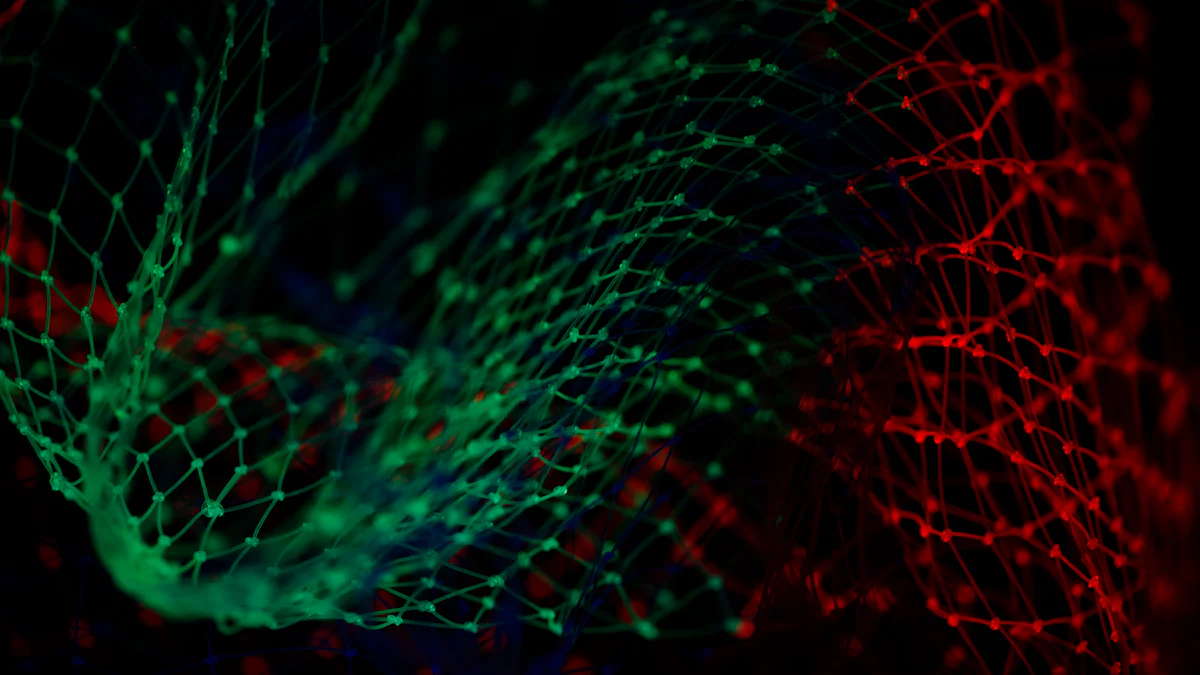
# Introduction to the CLIP (opens new window) Vision Model
The CLIP (Contrastive Language-Image Pretraining) model represents a significant leap in the realm of AI and machine learning. This innovative approach combines text and image understanding in a way that sets it apart from traditional models. What makes CLIP truly unique is its ability to learn widely applicable image representations efficiently, outperforming previous methods (opens new window) in various transfer datasets.
In the landscape of AI and machine learning, the emergence of CLIP holds immense importance. Its impact extends beyond conventional image recognition systems, opening doors to new possibilities in zero-shot learning and multimodal interactions (opens new window). The model's versatility and flexibility make it a game-changer in the field, showcasing remarkable performance across diverse tasks like fine-grained object classification and action recognition.
By leveraging quantitative experiments and validation (opens new window) across multiple datasets, CLIP has proven its prowess in handling complex tasks with ease. Its groundbreaking capabilities in zero-shot learning (opens new window) and text-guided image generation underscore its potential to revolutionize how we interact with visual and textual data.
# 1. What is the CLIP Vision Model?
The CLIP (Contrastive Language-Image Pretraining) model stands at the forefront of modern AI advancements, reshaping how machines perceive and interpret visual data. At its core, CLIP represents a fusion of cutting-edge technologies that bridge the gap between text and image comprehension.
# The Basics of CLIP
CLIP introduces a revolutionary paradigm shift in image recognition by transcending traditional boundaries. Unlike conventional models that rely solely on labeled datasets, CLIP adopts a more holistic approach, enabling it to grasp intricate visual concepts with unparalleled accuracy. This innovative methodology empowers CLIP to recognize diverse objects, scenes, and patterns without the need for extensive manual annotations.
# Understanding Multi-Modal Learning (opens new window)
One of the key strengths of CLIP lies in its adeptness at integrating textual and visual information seamlessly. By harmonizing these two modalities, CLIP can discern complex relationships between words and images, unlocking a new realm of understanding. This multi-modal learning capability allows CLIP to generalize across various domains, making it adaptable to a wide array of tasks with minimal fine-tuning.
# 2. How Does the CLIP Model Work?
The intricate workings of the CLIP (Contrastive Language-Image Pretraining) model delve into a sophisticated interplay between vision and language processing, revolutionizing how machines comprehend and interact with visual and textual data.
# The Mechanics of Vision and Language Processing
In the realm of CLIP, the process begins by extracting intricate features from both images and text, a pivotal step that lays the foundation for its robust understanding capabilities. By leveraging modern deep learning architectures (opens new window), particularly Transformers, CLIP navigates the intricate relationships between visual and textual elements with finesse. This approach not only enhances image-text similarity but also propels CLIP towards excelling in zero-shot image tasks, showcasing its versatility across various multimodal AI applications.
# Training the CLIP Model
Central to CLIP's prowess is its ability to learn from a vast array of internet data (opens new window), honing its skills through exposure to diverse sources of information. This extensive training regimen equips CLIP with a nuanced understanding of complex concepts, enabling it to navigate through a myriad of visual and textual nuances effortlessly. By immersing itself in a sea of data, CLIP refines its cognitive abilities, paving the way for enhanced performance across an array of tasks.
# The Role of Transformers in CLIP
At the core of CLIP lies the transformative power of Transformers, particularly evident in their self-attention mechanism (opens new window). This innovative feature allows CLIP to focus on relevant aspects within images and text, enhancing its ability to discern crucial details effectively. By prioritizing self-attention, CLIP optimizes its learning process, ensuring that it captures essential nuances vital for accurate image recognition and semantic understanding.
# 3. The Power of Zero-Shot Learning in CLIP
# Defining Zero-Shot Learning
Zero-shot learning within the context of CLIP embodies a remarkable capability where the model can make accurate predictions even in scenarios where it hasn't encountered specific examples during training. This innovative approach allows CLIP to transcend traditional learning paradigms, showcasing its adaptability and generalization prowess. By leveraging natural language supervision, CLIP can seamlessly transfer knowledge across diverse computer vision classification datasets without the need for explicit examples.
# CLIP's Approach to Zero-Shot Learning
One of the defining features of CLIP is its ability to perform zero-shot image classification (opens new window) with unparalleled accuracy and efficiency. Drawing inspiration from pioneering research, CLIP excels in classifying images solely based on textual descriptions, a feat that underscores its flexibility and robustness. This zero-shot adaptability extends across various domains and tasks, positioning CLIP as a frontrunner in high-performance image classification with minimal manual intervention required.
Scientific Research Findings:
CLIP's foundation in zero-shot transfer learning (opens new window) enables accurate predictions on entirely new classes or concepts.
The model showcases strong vision-language few-shot learning abilities (opens new window), demonstrating remarkable zero-shot capabilities.
Zero-shot image classification with CLIP represents a fascinating use case for effortless high-performance image categorization.
In essence, CLIP's prowess in zero-shot learning not only streamlines the image classification process but also highlights its capacity to navigate uncharted territories with finesse. This groundbreaking approach signifies a paradigm shift in how AI systems comprehend and interpret visual data, paving the way for enhanced efficiency and adaptability across diverse applications.
# 4. Real-World Applications of the CLIP Model
# Enhancing Image Search Engines
In the realm of image search engines, CLIP emerges as a transformative force, revolutionizing how users interact with visual content. By associating images with natural language descriptions, CLIP enables versatile and flexible image retrieval systems. Users can now explore visually similar images effortlessly by inputting textual queries, transcending traditional keyword-based searches. This innovative approach not only enhances user experience but also streamlines the search process, providing tailored results aligned with individual preferences.
# Improving Content Moderation
Content moderation on online platforms plays a pivotal role in maintaining a safe and inclusive digital environment. Leveraging its robust capabilities, CLIP excels in detecting inappropriate or harmful content efficiently. By analyzing images and accompanying text, CLIP can swiftly identify and filter out graphic or NSFW material, ensuring a secure online space for users. This application underscores CLIP's significance in upholding community guidelines and fostering a positive online ecosystem.
# Future Possibilities
As technology continues to evolve, the horizons of CLIP expand exponentially, paving the way for groundbreaking advancements in AI and machine learning. The model's adaptability and versatility hold immense potential across diverse domains, from healthcare to e-commerce. With ongoing research and development efforts, CLIP is poised to redefine how we perceive and interact with visual data, ushering in a new era of innovation and discovery.
Case Studies:
Real Project Use Case: Image Similarity Search Engine: Demonstrating practical application by providing visually similar images based on queries.
Zero-Shot Image Classification with CLIP: Highlighting effectiveness in accurately predicting image classes with minimal text labels.



